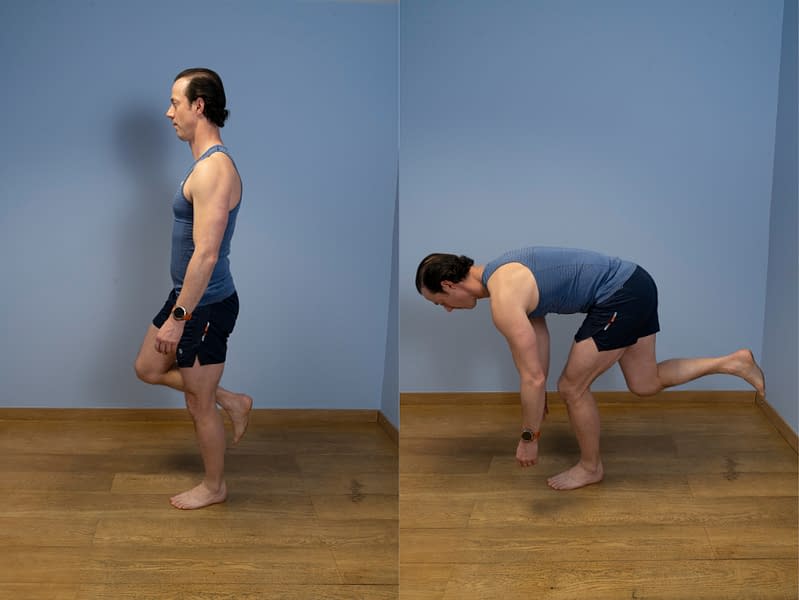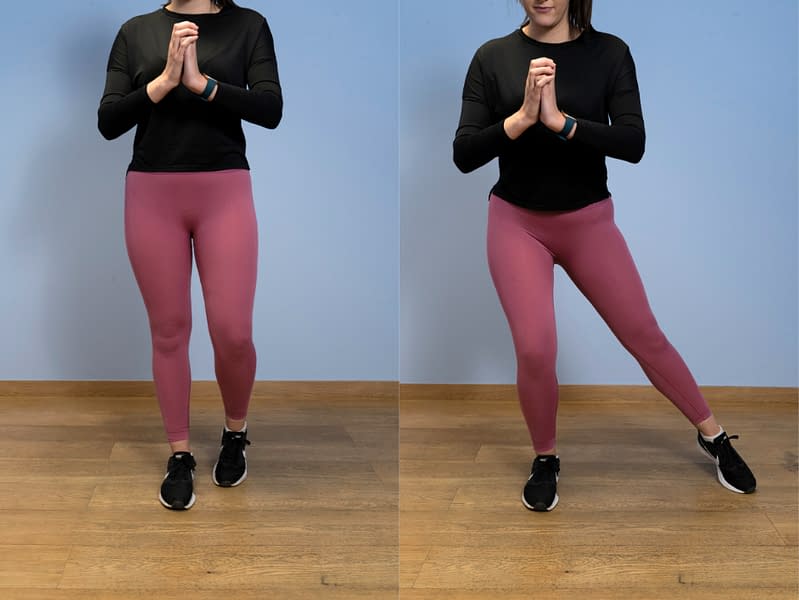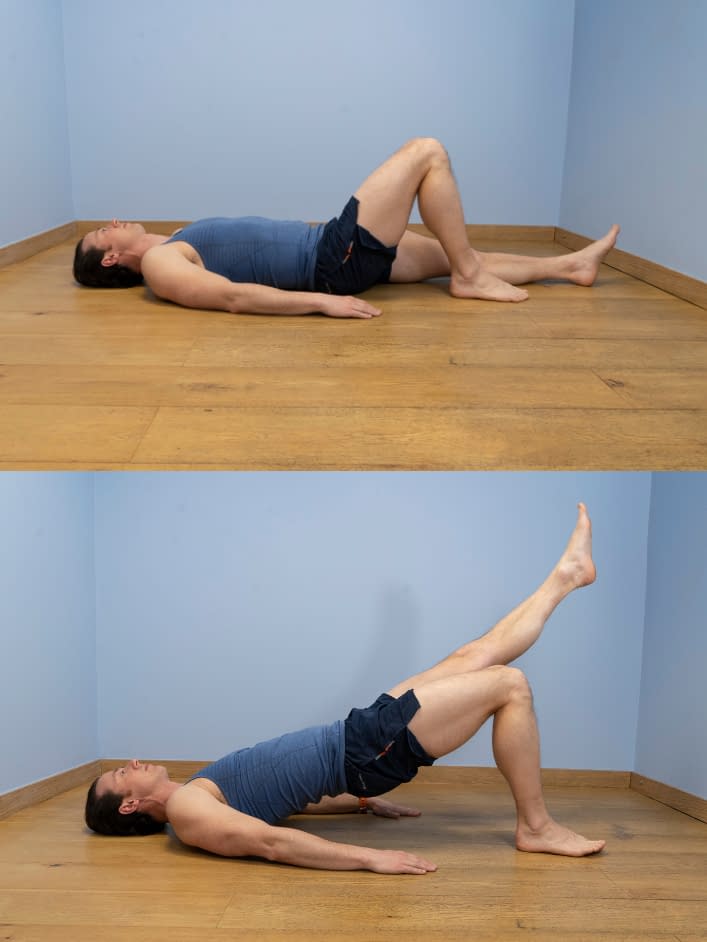Proximal Hamstring Tendinopathy Advanced Exercise Programme
Aim to perform this programme a minimum of once per day unless prescribed otherwise. As with any new exercise, start slowly (repetitions as able) and build up as you are able within the guidelines below.
Pain should not exceed 5/10 whilst completing this exercise programme.
1. Single leg pendulum
- Standing with feet shoulder-width apart, take your weight onto one leg, bringing your other knee up level with the hip.
- From this position, keep your weight on the standing leg, push your other foot down and out backwards like you are pressing a wall away until it is straight out behind you whilst simultaneously bending your torso forward to counterbalance yourself.
- Try to return to the start without putting your foot down to the floor. It is okay if you cannot do this, but practice will improve it. Repeat on both legs.
2. Step and reach
- Start by standing with all the weight on one leg.
- Rest the other foot next to the standing foot for balance.
- Now with the non-standing leg, reach out sideways (hovering just above the floor) as far as possible whilst at the same time bending the standing leg.
- Then return to the start position, maintaining your balance.
- Repeat in a forwards and backwards direction, and continue to do this in a cycle of the three movements, only touching down if you start to lose your balance.
3. Bridge with leg lift
- Lie on your back on the floor or bed with your knees bent at 90 degrees and your feet on the floor and your arms down by your side.
- Push your heels down into the floor to gently lift your hips upwards. Lift as high as you feel comfortable but no higher than a straight line between hips, knees, and shoulders.
- If you feel discomfort, then try squeezing your tummy and bum muscles before starting the lift.
- From this position, lift one leg slightly off the floor and return.
- Repeat on the opposite side.
- Try and keep the pelvis still.
We recommend consulting a musculoskeletal physiotherapist to ensure exercises are best suited to your recovery. If you are carrying out an exercise regime without consulting a healthcare professional, you do so at your own risk. If you have any concerns whilst completing these exercises, please contact a healthcare professional.
More Plans
This initial programme focuses on early, appropriate loading of the affected tendon and maintenance of lower limb strength and stability. Some of these simple strengthening exercises can be performed little and often during the day to help relieve pain and begin to strengthen your tendon. Isometric exercises (where the muscles contract against a fixed resistance without a change in the position of your leg) are an effective way to load the tendon and reduce pain in the early stages of this condition. This should not exceed any more than 5/10 on your perceived pain scale.
- 0
- 1
- 2
- 3
- 4
- 5
- 6
- 7
- 8
- 910
Once your pain has settled to more manageable levels, you can progress to more challenging exercises that strengthen your hamstring muscles in different ranges of movement. The aim of this intermediate stage of the rehabilitation programme is to restore hamstring muscle strength and capacity in a functional range of movement. Pain during these exercises is safe and acceptable If your pain is above 5 during these exercises, you may need to reduce the amount of resistance you are using or decrease the number of repetitions you perform until the pain settles again. This should not exceed any more than 5/10 on your perceived pain scale.
- 0
- 1
- 2
- 3
- 4
- 5
- 6
- 7
- 8
- 910


